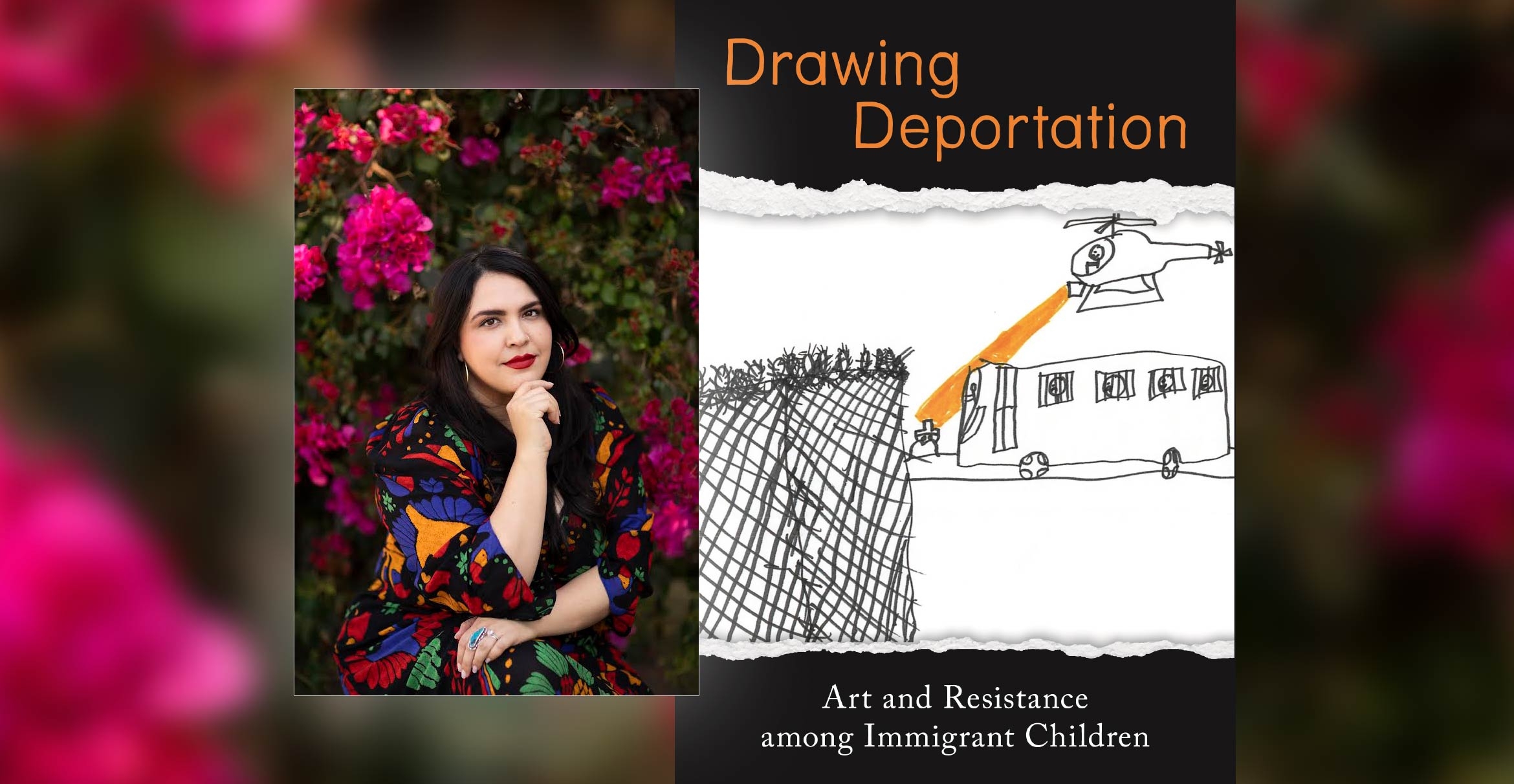
Young immigrant children often do not have the words to express how their lives are shaped by issues of immigration, legal status and policies of family separation. Yet they are able to communicate its effects on them using art.
“When a child is separated from a parent, it impacts every facet of the child’s life in emotional, physical and financial ways,” said Silvia Rodriguez Vega, assistant professor of Chicana and Chicano studies at UC Santa Barbara, whose new book considers hundreds of drawings by children living on the American side of the U.S.-Mexico border.
“The bond between a parent and a child is one of the most important bonds in life. When that bond is disturbed for any reason, it can hinder a child’s ability to grow up healthy,” Rodriguez Vega said. “Even after reuniting, even children who are U.S. citizens, are afraid of police officers, security guards and other armed officers because they represent a memory of that occurrence of family separation.”
In her book, “Drawing Deportation: Art and Resistance among Immigrant Children” (NYU Press, 2023), she provides accounts of children’s challenges with deportation and family separation during the Obama and Trump administrations, using the children’s drawings as a window into their interior lives and experiences.
In the book, based on 10 years of work with immigrant children as young as six years old in border states Arizona and California — and including an analysis of 300 drawings, theater performances and family interviews — Rodriguez Vega illustrates how the children of immigrants use art to grapple with issues of citizenship, state violence and belonging.
“It’s about the unintended or intended consequences of anti-immigration laws and their impact on children,” Rodriguez Vega said. “In their drawings, children are exposing the things that are impacting and hurting them; but also, through the tool of art, we can mitigate some of these policies.”
Arguing that immigrant children are not passive in the face of the challenges presented by anti-immigrant policies, she contends that art can be a space for vulnerable populations “to assert their humanity in a world that would rather divest them of it.”
Her research first began during her undergraduate years, when she worked at a community center in Arizona. As a mentor in an after school program, Rodriguez Vega developed a rapport with children that led to conversations about their lives. It wasn’t uncommon for children to tell her they had witnessed a deportation raid in their community, or that they were looking for a family member who had gone to pick up an impounded car, or other bureaucratic task, and did not return. “Were they deported?,” they’d ask. Many children expressed to her that they were afraid to go to school for fear they’d be deported too.
She soon turned to art as a tool to understand — and to help children heal. A mural project was proposed and one child at the community center said that he’d like to make a mural about peace.
“I asked, ‘What does peace look like?’” she recalled. “‘Peace looks like Sheriff Arpaio shaking hands with a Mexican,’ he said."
The child was referencing controversial former Maricopa County Sheriff Joe Arpaio, who gained widespread notoriety for his extreme, often inhumane immigration tactics.
But using Arpaio’s likeness in the mural wasn’t approved by the community center board, and soon the project was tabled. In response, Rodriguez Vega asked kids to reflect on why the mural was important to them by doing a drawing or writing a letter or poem. Many children used the opportunity to draw the worst moments of their lives: family separation. Arrests, detention and raids were common themes.
As a result, she embarked on a decade-long investigation into children’s drawings, eliciting a view into their worlds that would help make their pain visible to others.
One image that stands out was drawn in 2008 by Alex, a 7-year-old living in South Phoenix. “I saw him daily in his school uniform, a white polo shirt and navy-blue pants,” Rodriguez Vega said. “Alex was born in Phoenix, but his parents were undocumented immigrants from Sonora, Mexico.” Although he had access to colored pencils and crayons, he, like many others, drew only in pencil and on the bottom left corner of the paper.
“That image is powerful because most people who have interacted with children know they’ll fill the whole page with colors and shapes,” Rodriguez Vega said. “It highlighted the emotion of the drawing: a tiny police car, someone being handcuffed, and someone with long tears running down their face. We see law enforcement and we see pain. And you see it in a way that makes you feel alone.”
Through further ethnographic research, interviews with children, family members and school teachers, as well as observations made at home and at community centers, she has tackled the challenge of studying children and their experiences, an area that is often understudied.
“What happened in Arizona was a symptom of a much larger problem in the U.S. and connected to a long lineage of racial discriminatory processes that targeted children to make people suffer,” Rodriguez Vega said. “My research has an emotional beginning tied to my own upbringing but it is connected to something that is systemic.
“It is the lineage of family separation — happening currently to children on the border — an insidious tool used by the government since the founding of the country. It’s not a modern policy. It’s a tool of control with a long lineage of coercion and punishment of people of color.”
Debra Herrick
Associate Editorial Director
(805) 893-2191
debraherrick@ucsb.edu



